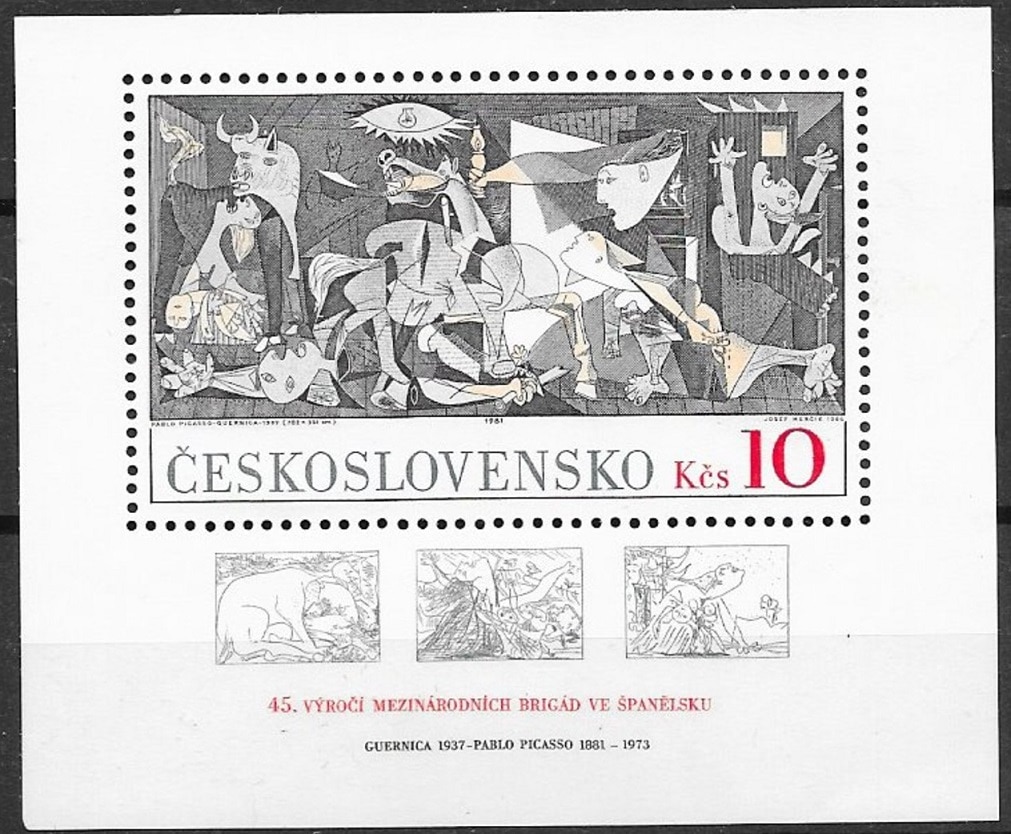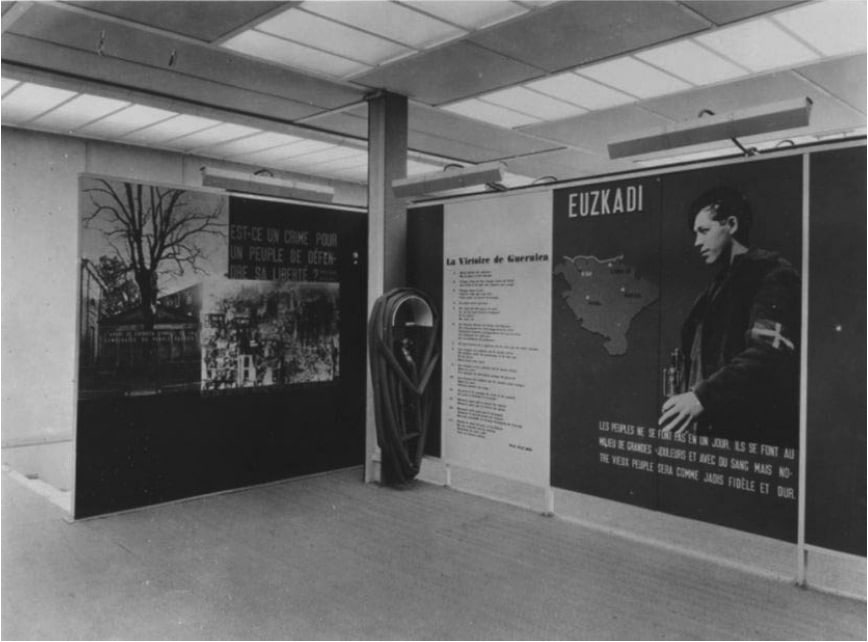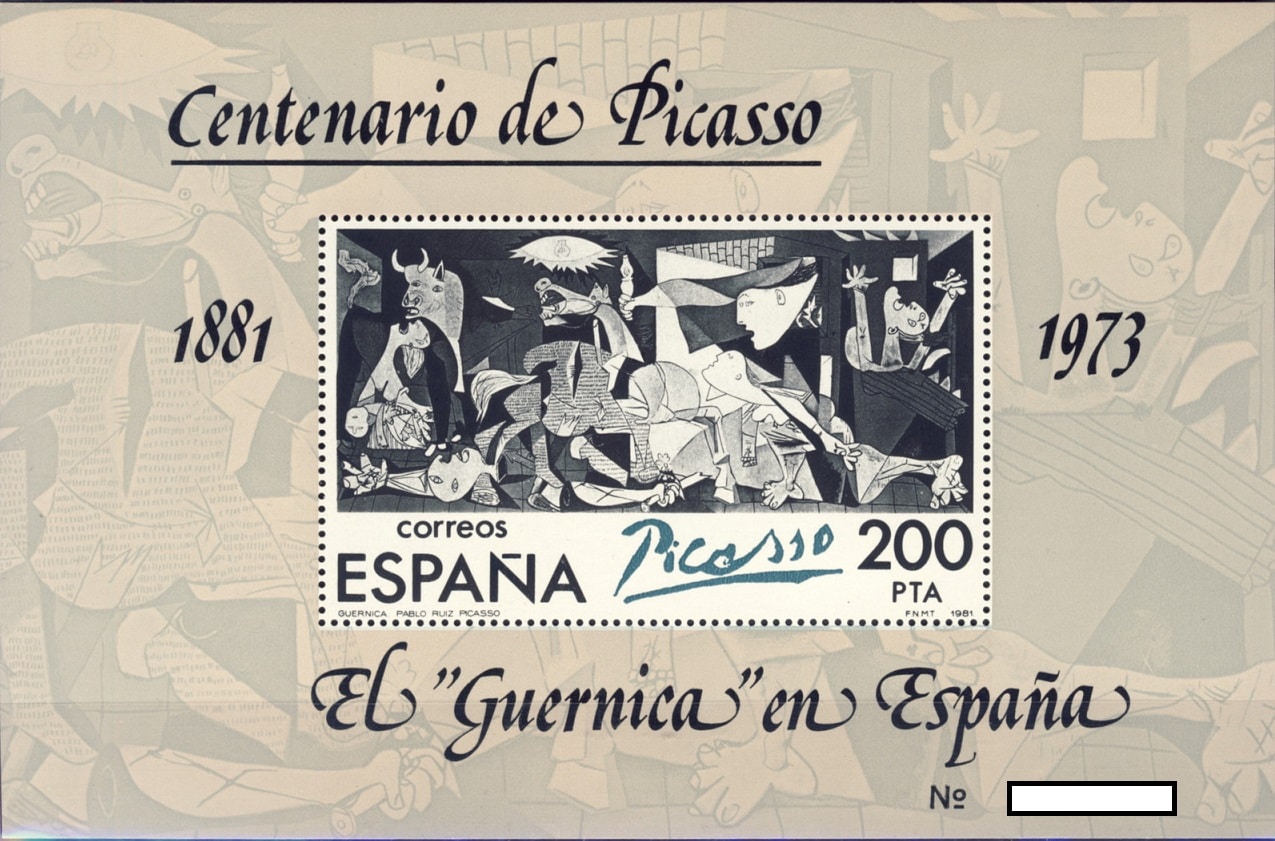A follower here on the blog who is also a stamp enthusiast, especially when those stamps are related to anything Basque (like us here with news, but in stamps) has written us to share a very interesting story relating the Picasso painting to some stamps. It goes without saying that we’re thrilled, and we’re eagerly looking forward to more stories about “Stamps and Basques”.
Today’s is about three stamps that reproduce the famous work of art, or that’s what we could be led to believe. Two are from Czechoslovakia, and one was issued by Spain to celebrate the painting’s arrival at Madrid, but with a “surprise”.
1966 Czechoslovakian stamp


Czechoslovakia issued a stamp reproducing the Guernica in 1966. This was met with a degree of controversy, as it was issued in commemoration of the 30th anniversary of the International Brigades in Spain, which the Franco government did not like at all, leading to the decision that any letters which arrived in Spain with that stamp would be returned.
1981 Spanish stamp, with “another Guernica“
To celebrate Picasso’s painting’s arrival in Madrid, the Government, then in the hands of the UCD, decided to issue a commemorative stamp with a heightened nominal value (for the time) of 200 pesetas.
It was all well and good until someone realized that the stamp did not faithfully reproduce the original Guernica but rather a copy with a noticeable number of small differences. They came under very strong criticism, but the stamp was not withdrawn, nor was a new one issued with the authentic painting.
It’s important to highlight that the stamp that was issued by the National Coinage and Stamp Factory (FNMT) used a slide provided by the General Directorate of Fine Arts as a base.
To learn more about this “story to keep you up”, and to see the differences between original painting and the “fake” that was used to make the stamp, which is still used to make the reproductions that are sold in the Reina Sofía Museum gift shop, see this blog, which goes into great detail.
1981 Czechoslovakian stamp


That same year, Czechoslovakia issued another stamp reproducing the Guernica for the same reason: the anniversary of the International Brigades in Spain, but this time, for the 45th anniversary. This time, at least, the letters with that stamp did reach their destination.
A bit of the history of the Guernica
In September 1981, the painting that has become the universal symbol against the barbarity of war, Pablo Picasso’s Guernica, painted under the influence of the impact caused by the Bombing of Guernica, arrived at Madrid.
The holy city of the Basque, home to the living symbol of our Freedoms, the Tree of Guernica, was razed by the insurgents’ bombs on April 26, 1937. Thanks to the international journalists who told the truth, the world learned of what really happened, and was able to see the underlying morality of those nazis, fascists, and francoists, who were using Guernica and other Basque cities as testing grounds to practice what they would later carry out in full during the Second World War.
This painting was first shown at the Spanish Republic’s Pavilion at the International Expo of Paris in 1937. The Spanish Pavilion opened on July 12 with the Guernica as its star attraction, and from the very start, it was warmly received by critics, and thus began its journey to become one of the most well-known works of art attacking the cruelty of war.
Forty-four years had to pass before the painting would enter Spain for the first time. However, it was not the Spanish Republic that had been defeated by some insurgents who, after forty years of dictatorship, imposed a monarchy to such a degree that they chose the monarch.
In these four long decades, the painting traveled through three continents after its presentation in Paris:
-
-
- 1938 As part of a traveling exhibit, it toured the Nordic capitals.
- 1938-1939 It traveled to Great Britain, where it was shown in several cities in order to raise funds for the Spanish Refugee Aid Committee.
- 1939-1953 It was at the MOMA in New York, with some tours in some US cities.
- 1953 The painting returned to Europe as part of an exhibit in Milan dedicated to Picasso.
- 1953 It traveled to South America to be shown in the Biennale.
- 1955 It returned to Europe as part of a retrospective on Picasso shown in Germany, the Netherlands, Belgium, and Denmark.
- 1957-1981, it never left the MOMA.
-
And finally, in 1981, it traveled to Madrid, to stay in the capital of the kingdom created by those who destroyed the city of Guernica and, with their savagery.
Guernica and the Basques


The presence of this painting in the city of Guernica has long been a demand of Basque society and institutions, though we’re sure we’ll never see it come to pass.
We can say that the moment that we Basques have been closest to this painting was in the Paris Expo in 1937, when it coincided in the Spanish Republic’s Pavilion with the exhibit on the Basque Country that the Basque Government had organized.
The Government of the Kingdom of Spain has never had any intention, or interest, in allowing this painting to go to the martyr city which gave it its inspiration and name.
There is even a movement that would like to break the link between the painting and the Bombing of Guernica, claiming that the artwork had already been “thought of” by the artist long before the city was destroyed. This is hardly surprising, as there has always been a revisionist argument that would like to remove any shred of prominence the bombing might have. That argument began when it was said that Aguirre’s hordes had burned the city to the ground, and lately, there is great determination to say that it was nothing more than a trifle, with few casualties, and that some of us Basques blow it all out of proportion.
Last Updated on Sep 30, 2021 by About Basque Country

































